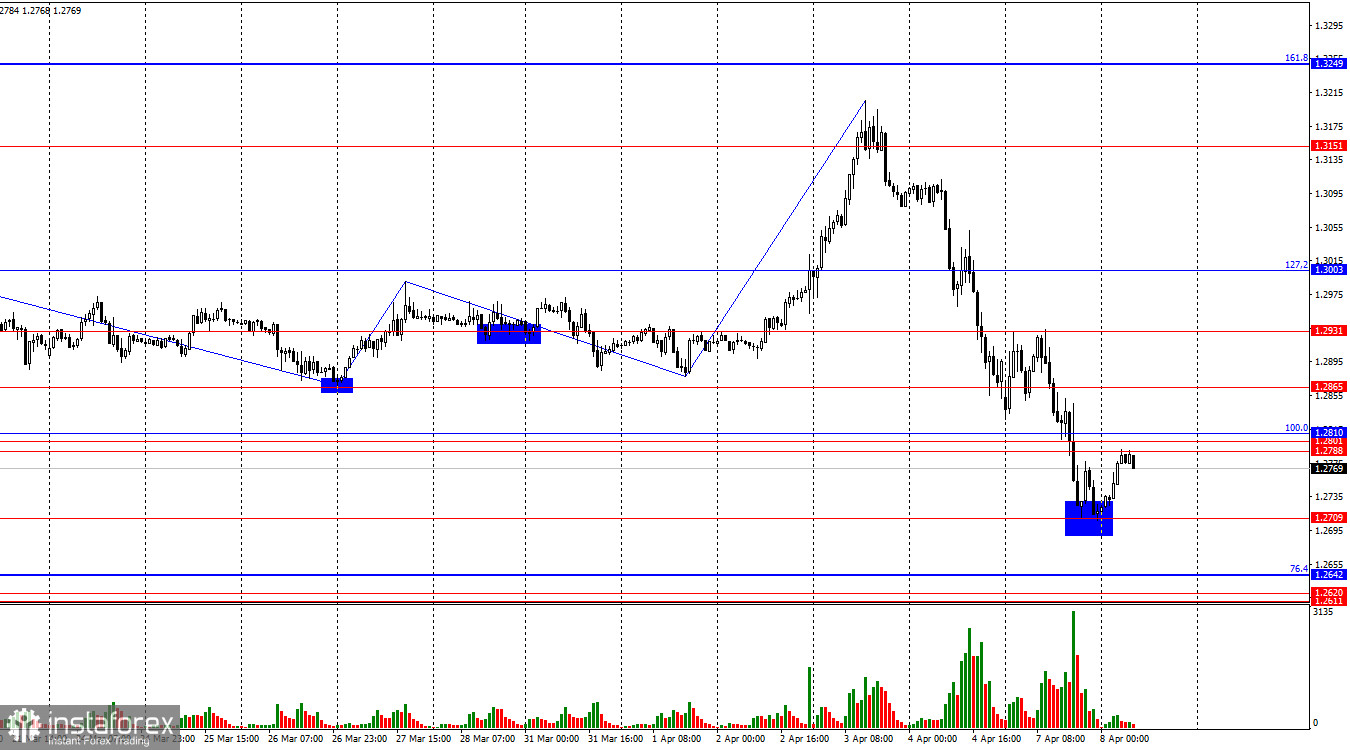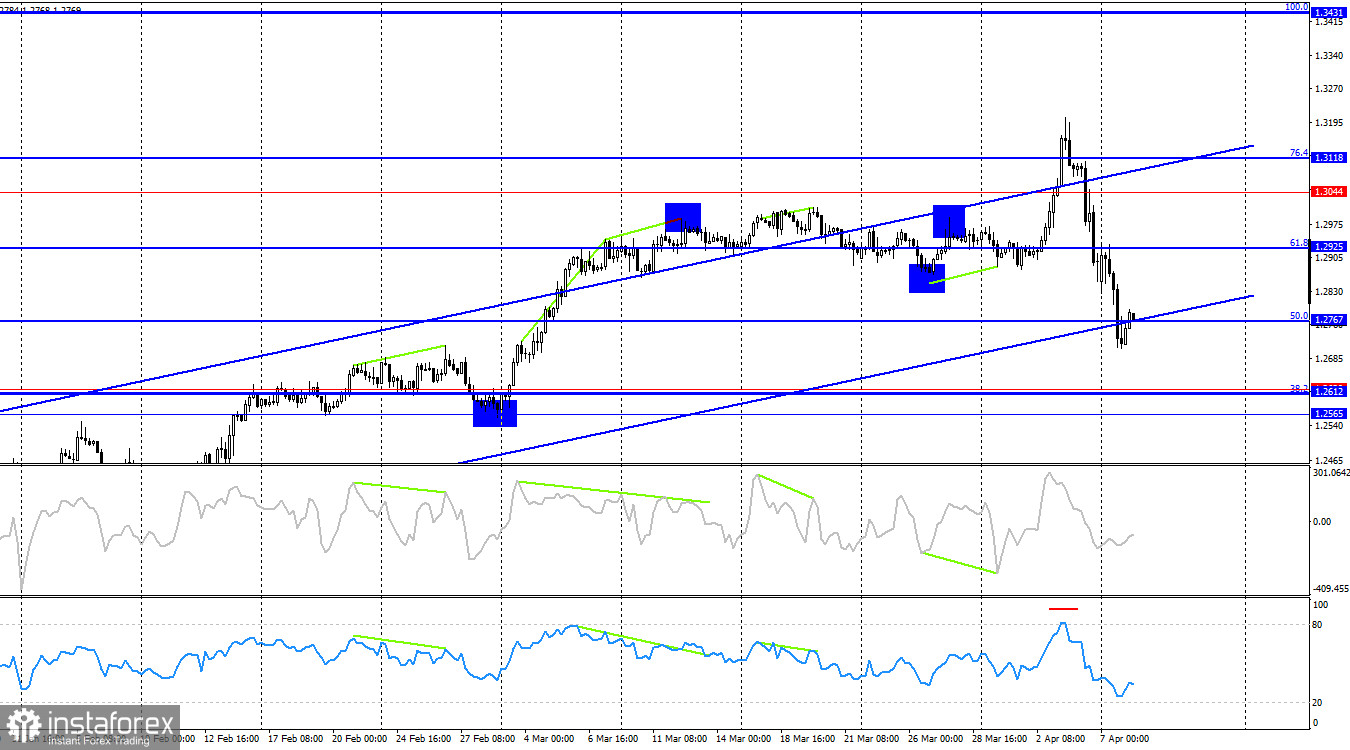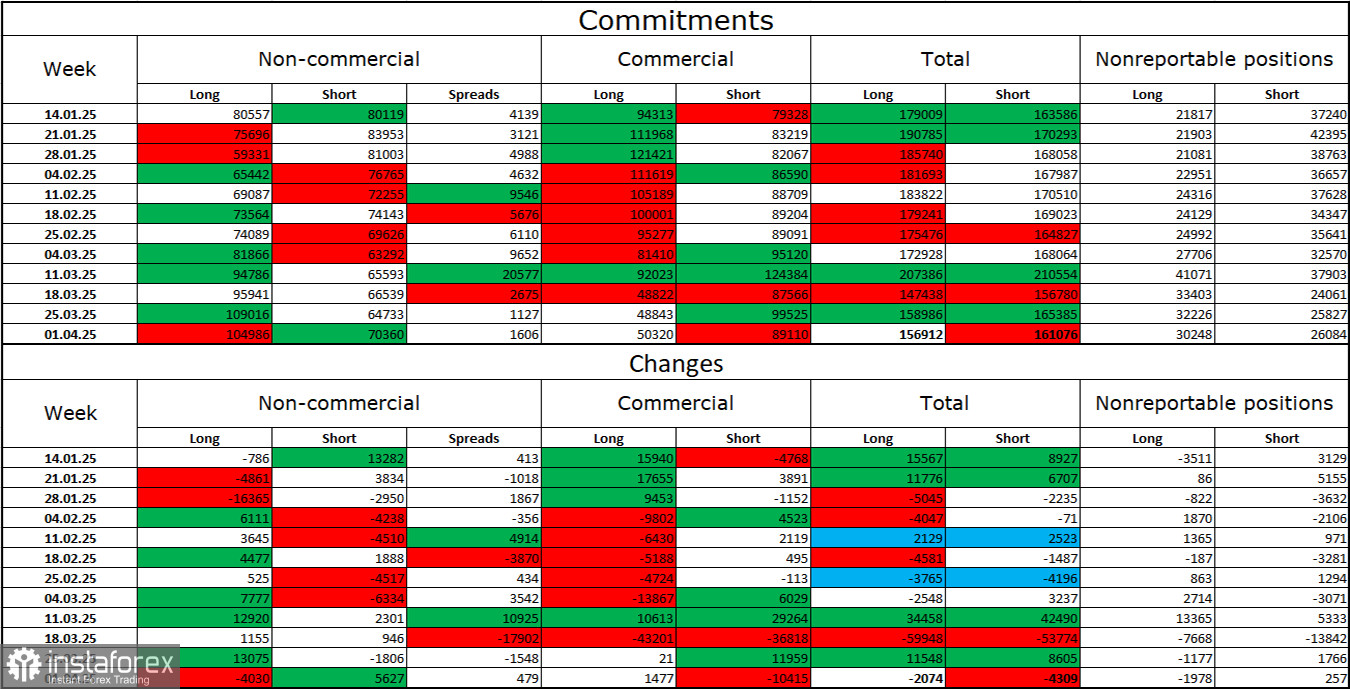On the hourly chart, the GBP/USD pair continued its decline on Monday and ended the day near the 1.2709 level. Over just two trading days, the pound dropped by roughly 500 points. A rebound from the 1.2709 level allowed the pound to recover toward the resistance zone of 1.2788–1.2801. A rebound from this zone would favor the US dollar and signal a resumption of the decline toward 1.2709 and 1.2642. A breakout above 1.2810 would allow for continued recovery toward 1.2865 and 1.2931.

The wave structure is absolutely clear. The last completed upward wave broke the previous high, and the new downward wave easily broke the last low. This may suggest that the trend is shifting to a bearish one. However, given recent events, the strength of the moves, and the frequency of reversals, I wouldn't rush to such conclusions. In my opinion, market sentiment may shift multiple times again. Everything depends on how the trade war unfolds.
The news background on Monday had no impact on trader sentiment and could not have had any, since there were no economic events in either the US or the UK. All news concerned tariffs, tariffs, and more tariffs. It is unclear to me how the majority of traders concluded that it was time to buy the dollar. The dollar had been sold off for months, and every new escalation in the trade war led to another decline in the US currency. In the past two days, the dollar has confidently strengthened, and bears have been active — but this movement raises more questions than answers. Today, we can likely expect new statements from Donald Trump, EU leaders, China, and other countries unwilling to accept the new trade reality. These headlines will be decisive for all global markets. At this point, chart analysis cannot be used to open trades without clear alignment with the news.

On the 4-hour chart, the pair still maintains a bullish trend. Even a move below the ascending channel in the near term wouldn't yet suggest a trend reversal. The trade war continues to escalate, and in recent months this has only led to dollar weakness. Therefore, the recent dollar strength looks unusual. One way or another, chart analysis alone cannot answer what to expect next. The news background is what drives the market.
Commitments of Traders (COT) Report:

The sentiment of the "Non-commercial" trader category became less bullish in the latest reporting week. The number of long positions held by speculators decreased by 4,030, while short positions increased by 5,627. Bears lost their edge in the market. The gap between long and short positions now stands at 35,000 in favor of the bulls: 105,000 vs. 70,000.
In my view, the pound still has downward potential, but recent developments may prompt a longer-term market reversal. Over the past three months, the number of long positions rose from 80,000 to 105,000, while short positions fell from 80,000 to 70,000. More importantly, in the last nine weeks, long positions rose from 59,000 to 105,000, and short positions dropped from 81,000 to 70,000.
News Calendar for the US and the UK:
There are no notable entries in Tuesday's economic calendar. As a result, the news background is not expected to influence trader sentiment today. However, developments related to the trade war throughout the day could have a strong impact.
GBP/USD Forecast and Trader Recommendations:
I would advise selling the pair today on a rebound from the 1.2788–1.2801 zone on the hourly chart with targets at 1.2709 and 1.2642. Buying is possible on a breakout above 1.2810 on the hourly chart with targets at 1.2865 and 1.2931. However, keep in mind that market conditions are currently extremely chaotic.
Fibonacci levels are drawn from 1.2809–1.2100 on the hourly chart and from 1.3431–1.2104 on the 4-hour chart.





















